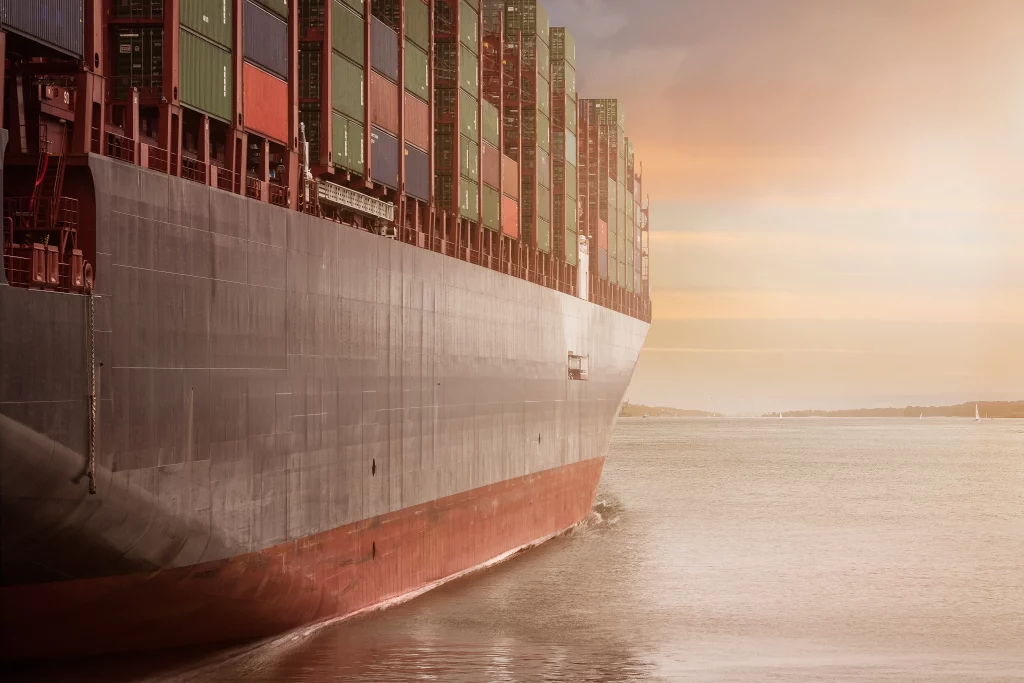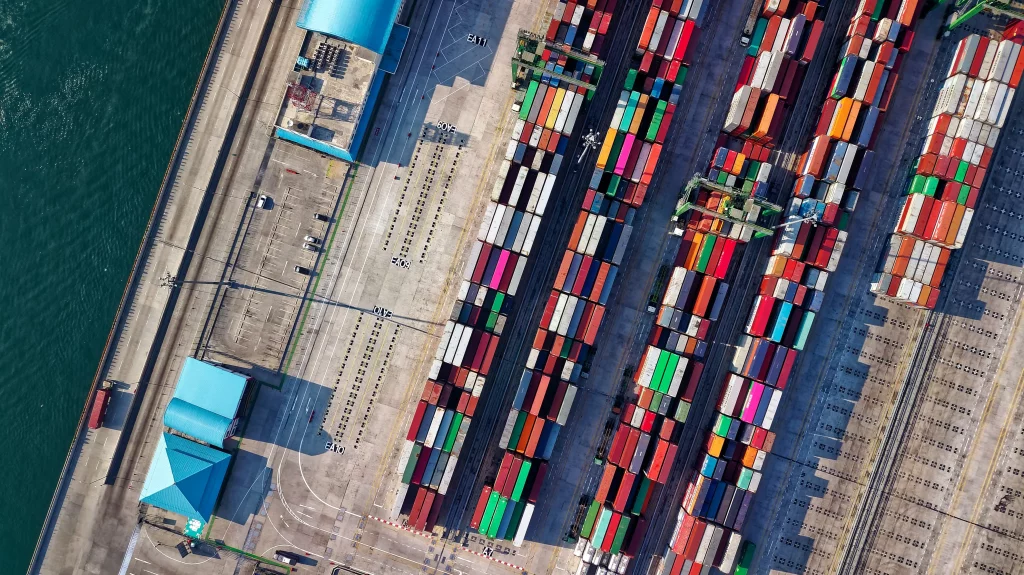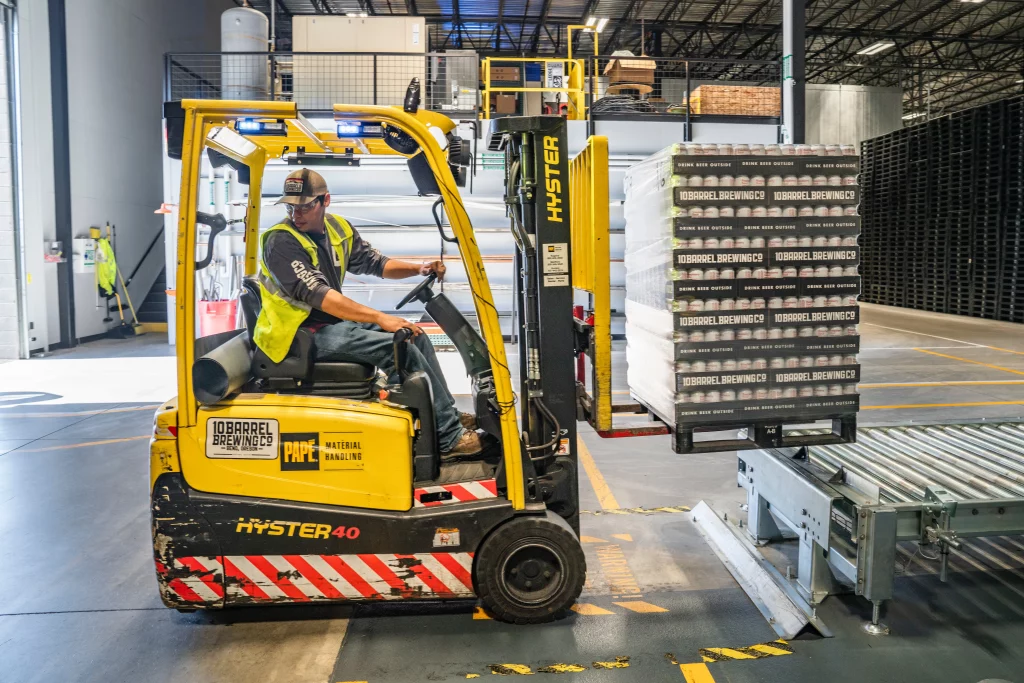COVID-19 Supply Chain disruption
In the last year, the world has been rocked by the COVID-19 pandemic. The effects of this crisis were felt in every sector of our lives and business. Our lives have forever been changed through loss and the forced change in our social habits. One of the biggest effects on our business lives has been the forced overhaul of our understanding of our supply chain networks.

This infrastructure has come under huge pressure, especially in the supply of PPE to the front-line personnel. Early on China recognized the need for copious volumes of PPE. It has changed the way these products were produced and distributed within China. But how has the rest of the world reacted to this supply chain crisis? Is the world able to change the way we rely on international supply chains to better equip ourselves for the new future that is dawning?
To better understand this issue it is worthwhile to examine the past. Also how we created the infrastructure that has dismally failed this past year.
Pre COVID Pandemic Supply Chain Infrastructure
Despite the trade war raging between the USA and China, most of the world production happened in China. Consumers demanded low prices. The only way suppliers could deliver on that demand was to source from the cheaper Chinese labour market. Even though the labor cost in China has been on the rise recently it still presented a cost-effective production house for the world. Manufacturers all over the world were purchasing raw materials and semi-finished products from mainland China. This single-source supply chain was working well. It aided the consumer demanded delivery with cheap electronics and other products.
A simple example of this thinking was the global move to China. It was for the production of high-volume consumer goods like electronics and clothing. In particular, this phenomenon was evident when shoe manufacturers moved their manufacturing to China. It started with Nike and soon afterwards the other shoe brands like Adidas and Reebok had to follow suit just to stay competitive. Electronic manufacturing has long been the domain of the Chinese producers mainly. It is because of the lower cost of labour and internal supply chain infrastructure.

Globally there was an ability to source your products for international suppliers whilst still keeping your stocks low and maintaining on-time delivery both for clients and for your warehouse. This was a comfortable system that worked well. However, when the pandemic raced across the world ignoring borders and trade routes, this perfect supply chain world was shattered.
COVID-19 Supply Chain Issues
Early in February 2020, the world was in the grips of the pandemic, and borders were closed, flights were cancelled and almost everybody went onto lockdown. As a remedy to the pandemic, it was the best action to take but the unforeseen result was the total breakdown in supply of any, now vital products. These products like PPE were manufactured in China and the world needed them now more than ever. But they could not get these products due to the lockdown conditions. Not only that, China rerouted all manufacturing of PPE internally so that they can deal with the demand for these products locally. This meant that the world had an enormous shortage of these products when they needed them most.
This shortage became daily news the world over. For months the largest economies were battling to find PPE products from their international partners. This caused a few close calls with allies. Several incidents were recorded where armed escorts were employed to get the vital goods from supplier to end-user. Even a few heists were recorded amongst former close “international friends”.
Although the full effect of the supply chain breakdown was felt specifically in the medical industry, where most countries relied on the cheap manufacturing out of China. The rest of the business world also suffered the consequences of the breakdown in supply. Where before countries would shy away from stockpiling supplies due to operational cost issues. It now appeared that supply routes were forever changed.
Post COVID-19 Supply Chain Redesigned
In particular, companies and many countries as well were needing to recreate their supply networks to fulfil the demand from the industry. The disruption to the supply chain was multifaceted. For example, if a producer of electronic goods used to have the many components for their products come from various suppliers globally, that network has been forced to shut down in recent months. Or imagine a car manufacturer that requires touchscreens or other electronics for their vehicles, supplied from manufacturers in China or even Korea. These trusted, vital supply networks will have to be redesigned to deal with the post COVID world.
The real question is, however, how do countries do this and what do they need to keep in mind when they are re-creating their supply infrastructures.
Identify your Risk and Exposure
If your company wants to survive in the post COVID world, you are going to have to do some serious introspection. Introspection into the full extent of your supply network, and how you can streamline it in the new environment we find ourselves in. for the most part companies in the past have only done this by looking at their most vital and strategic supply infrastructure. But to deal with the current challenges you are going to have to delve deeper than ever before. You will have to get right down to the very first step in the supply chain and analyze it all the way back to your doorstep.

This exercise is a costly one, and might even be time-consuming. Yet it is vital to your survival. The cost and time it will take is a small comparison to the losses that you will suffer if another disruption like COVID comes around. You should look at everything from logistical centers and transportation hubs for every detail of your final product.
It is also crucial that you identify your exposure if one of these cogs in your machine stops working. If a single spoke of your supply wheel breakdown what will your cost be in the loss of production as well as what the cost of finding a new supplier will be. This would have to also address the change in manufacturing on your part. Would your manufacturing process be adaptable to a new supply of a single component? Understanding this will result in your business being able to switch the supply chain if one of your suppliers suffers a disruption in production.
Consider a Supply plus One strategy
Many experts in the world of supply chain management have started to promote a Supply plus One strategy. This means that you have an alternate supply source for your components that would give you the flexibility to switch suppliers in times of disruption.
This strategy should also take into account that if your supply used to come from mainland China you should at least have an alternate supplier outside of the Asian region to further create redundancy in your supply chain.
For example, many developed countries relied on China for their PPE supplies until recently. But when the COVID pandemic struck and China became its own biggest customer, the world at large suffered a loss of supply. This was seen in the early months of 2020 when many developed countries closed their borders to protect against the pandemic. But they were more vulnerable due to the lockdown as they cut themselves off from their supply network as a result.
This was a huge factor in the response-ability of these countries, as their medical response was hampered by the lack of PPE products and supplies. Many of these countries and in turn their local manufacturers had to scramble to get new suppliers of the vital products they needed to produce these life-saving products.
The situation was made even more severe when the USA and UK realized that their stockpiles were depleted due to a previous medical crisis and were never replenished. Further legal and internal conditions made the situation almost untenable.
In Conclusion
Countries and companies that are in the midst of a supply chain crisis should be looking inward to solve the problems. In the past decade alone there have been great advancements in the manufacturing process with automation. New processing technologies could lead to better local supply infrastructure. These techniques could reduce the reliance on global supply chains for your most vital components. Also, you could investigate the viability of continuous-flow manufacturing, especially in the medical sector for the production of vital pharmaceutical drugs and vaccines.
The introduction of 3D printing technology has made the production of complex metal parts and components far simpler. You could potentially reduce your reliance on external supply by as much as 80% if you reinvest in the local manufacturing sector for your components.
These are just some of the strategies that you could employ right now to make your business more stable in the current environment and the future. The time is now to get the planning and investigation of your supply chain underway. It will help you survive in the ever-changing supply and demand of the post COVID economy.
Tetra Inspection
Finding the right suppliers and keeping your manufacturing going through the turmoil of the current supply chain challenges. This is what Tetra Inspection can help you with. Our Supplier Audit helps you get the materials to your production centers on time and with the highest quality of delivery. If your supply chain is taking strain due to current social and economic challenges let Tetra Inspection help you get it back on track. Check out the wide range of supply chain services on our website – Tetra Inspection.
In Conclusion
so Customized Quality control services. The boy liked birds, but he was afraid of cats. Similarly, he did not like lions and tigers. Jonas promised to love, honor, and also obey his wife. Moreover, he will do all the cooking. Ali is cleaning while he studies at home. Furthermore, he is grateful that his new wife earns enough money to pay the bills. Harry ate six shrimp at dinner. Beautiful giraffes roam the savannah. Sue changed the flat tire. We are going to watch a movie tonight. I will clean the house every Saturday. so, Tom painted the entire house. The teacher always answers the students’ questions. Harry ate six shrimp at dinner. Beautiful giraffes roam the savannah. Sue changed the flat tire. We are going to watch a movie tonight. Mom read the novel in one day. I will clean the house every Saturday. Tom painted the entire house. The wedding planner is making all the reservations. The director will give you instructions. Ali is fat. saim is slim. Tahir is clever. Mom cooks food. I do Amazon FBA Inspection. Ali is bad. I go to school. Finally, I left my job. Eventually, I have passed the test. life is easy. And he does it. So he plays cricket. Ali plays cricket. He goes to school. Tahir is ill. I make food.


